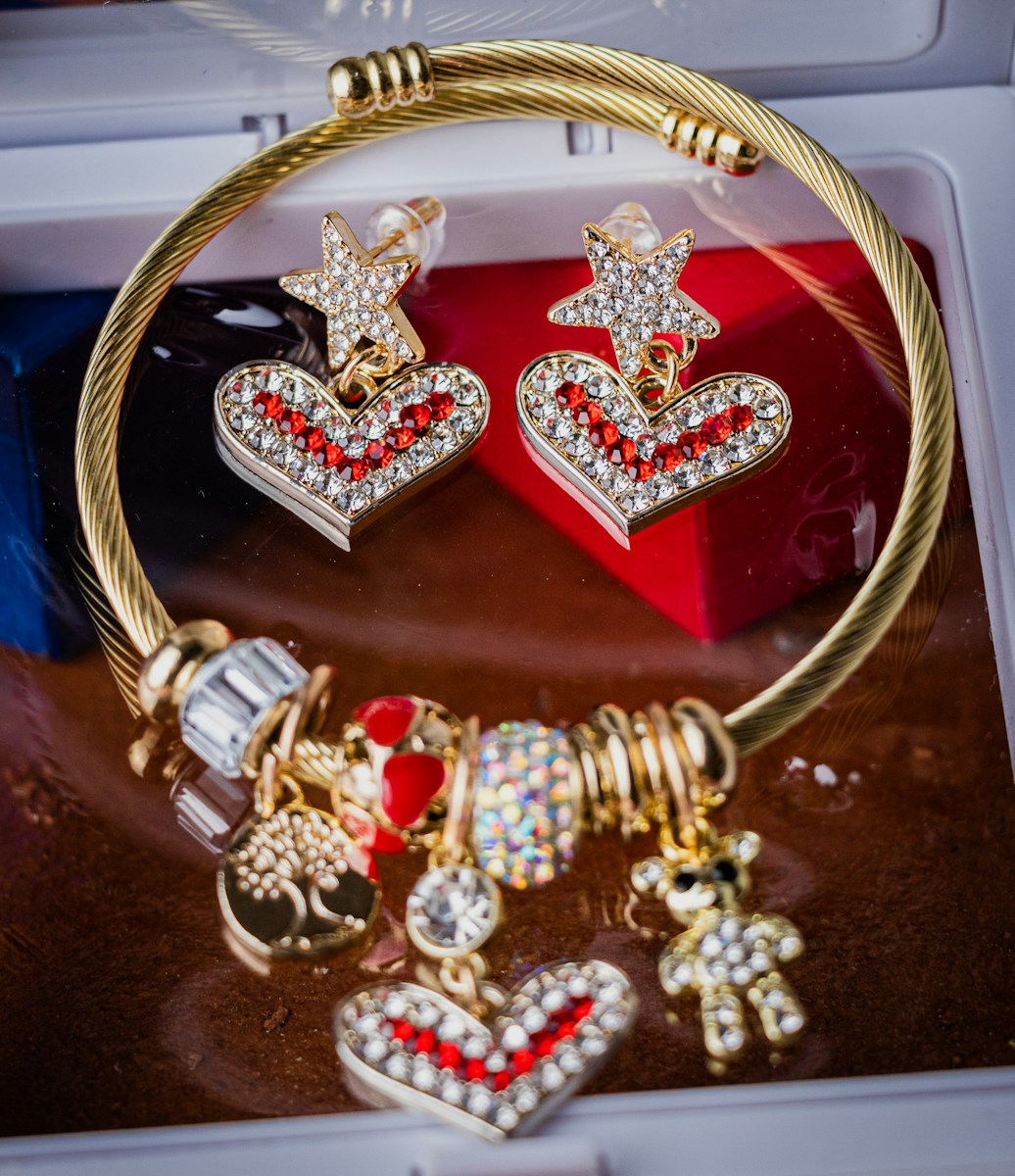Jewelry has the unique ability to transform an outfit, offering a personal touch that can make a look feel truly complete. Yet, when it comes to styling jewelry, the line between chic and overdone can often feel thin. Knowing how to mix and match jewelry without crossing into the territory of overwhelming can be a tricky art. When done well, layering pieces and combining metals, textures, and gemstones can create a harmonious and sophisticated appearance. Done poorly, however, it can appear chaotic and disjointed.
So, how do you successfully mix and match jewelry without looking overdone? The key lies in balance, intention, and restraint. Here, we’ll explore some expert tips for creating the perfect jewelry combinations that complement your style while remaining elegant and tasteful.
The Principle of Balance
The first thing to consider when mixing and matching jewelry is balance. This doesn’t mean you can’t wear multiple pieces, but it does mean that you should be mindful of the types of jewelry you pair together. Just as in fashion, the balance between bold and subtle pieces is crucial. When combining jewelry, aim for one statement piece and then complement it with more subtle items. This approach creates a focal point without overwhelming your look.
- Choose One Statement Piece
Statement jewelry is bold and eye-catching, often featuring oversized gemstones, intricate designs, or unusual shapes. While these pieces are fantastic for making a bold statement, you don’t want to compete with them by wearing multiple statement items at once. Instead, choose one standout piece—whether it’s a chunky bracelet, oversized earrings, or a bold necklace—and allow it to take center stage.
For example, if you’re wearing a large, statement necklace, consider opting for more delicate earrings and rings. A pair of small studs or a simple band will complement the necklace without competing for attention. If you prefer statement earrings, choose a minimalist bracelet or a delicate watch to add some contrast without overwhelming the overall look.
- Opt for Proportional Pairing
Another essential concept when mixing jewelry is understanding the importance of proportion. Large, bold pieces look great when paired with other smaller, delicate pieces. The contrast between these proportions can create an elegant effect that feels curated, not cluttered. For instance, a wide cuff bracelet paired with a thin gold chain necklace and tiny stud earrings creates a balanced look without overloading the outfit.
Similarly, pairing two chunky pieces might seem appealing, but it can result in a look that’s too heavy and busy. Instead, balance out large pieces with more minimalistic options. If you’re wearing a thick, textured ring, complement it with a finer bracelet or smaller pendant necklace. This keeps the overall aesthetic from feeling too heavy or overwhelming.
The Power of Metals
One of the most common challenges when mixing jewelry is deciding whether to mix metals. In the past, people were often advised to stick to one metal at a time—either gold, silver, or rose gold. However, modern jewelry trends embrace the mix of metals, and when done thoughtfully, combining different metals can create an interesting, sophisticated look.
- Mix Metals in Moderation
When mixing metals, the key is to keep it balanced. Avoid overwhelming your look by using too many different tones. A good rule of thumb is to limit your combination to two metals, such as gold and silver, or rose gold and platinum. This creates contrast and interest while ensuring that the metals don’t clash. For example, a pair of silver hoop earrings could be beautifully paired with a gold chain necklace, or a rose gold ring might look great alongside a platinum bracelet.
Don’t be afraid to mix metals that reflect your personality. Some people prefer a mix of warm and cool tones, while others may feel more comfortable sticking to one family of metals. The beauty of modern jewelry styling is that there are no hard and fast rules. It’s all about experimenting and finding what works best for you.
- Complementary Color Schemes
Alongside metal mixing, consider the color scheme of your jewelry. When selecting pieces to combine, keep the color palette in mind. Jewelry that complements or contrasts in color can make for an eye-catching look without feeling chaotic. For example, pairing emerald green stones with gold and diamond accents creates a rich, luxurious appearance. Alternatively, pairing blue sapphires with silver pieces creates a cool, refreshing effect.
When mixing different-colored gemstones, be mindful of how their tones interact. Try to pair colors that enhance each other, rather than clashing. If you’re unsure, choose classic neutral-colored stones like diamonds, pearls, or onyx, which are versatile and can be combined with almost any metal or gemstone.
Layering for Elegance
Layering jewelry has become a hallmark of modern accessorizing, but there’s an art to making it look stylish without overloading your frame with unnecessary pieces. While layering necklaces, bracelets, and rings can help you create a bold, personalized style, it’s important to layer thoughtfully.
- Layering Necklaces
When layering necklaces, one of the most effective ways to do so is to mix lengths. A short choker paired with a mid-length pendant or a longer chain can add dimension to your look. Choose necklaces with different textures, as well. A sleek, delicate chain paired with a chunkier, statement necklace creates visual interest while maintaining balance.
Remember to avoid too many layers that crowd your neckline. Two or three necklaces should suffice to create a well-balanced layered look. Additionally, ensure that the necklaces are complementary in style—if one is minimalistic, the other can have a more intricate design, but avoid competing with bold, clashing designs.
- Bracelet and Ring Layering
Similar to necklaces, bracelets and rings can be layered to add texture and interest. For bracelets, a mix of a chunky bangle with a few thinner, delicate bands can create a balanced look. Try stacking rings, but be mindful of how many you add. A few rings—perhaps one statement ring with several subtle ones—can create a sophisticated effect. However, if you layer too many rings, the look can quickly become overdone.
When stacking rings, consider placing one on each finger rather than crowding a single finger with multiple rings. This spreads out the visual weight and prevents the look from becoming too busy.
Keep It Simple with Earrings
Earrings are often the most noticeable piece of jewelry, so when mixing and matching, they deserve special attention. While it’s fun to experiment with different earring styles, simplicity is often key.
- Pairing Earrings with Other Jewelry
When choosing earrings, consider the style of other jewelry you’re wearing. If you have a bold necklace or several stacked bracelets, opt for more subtle earrings. Simple studs or small hoops work well in these cases. Conversely, if you’re wearing minimal jewelry elsewhere, you can afford to make your earrings a statement piece, such as chandelier earrings or bold geometric designs.
The most important rule when it comes to earrings is to avoid overcomplicating them. One standout piece is enough—if your earrings are large and statement-making, keep the rest of your jewelry simple to avoid overwhelming your face.
Less Is More: Embrace Restraint
While it’s fun to mix and match jewelry, it’s essential to remember that less is often more. Too many layers, excessive pieces, or clashing metals can detract from the elegance of your overall look. The key is to create harmony in your choices. If you’re unsure about whether your jewelry choices are overdone, step back and reassess.
Sometimes, removing a piece—whether it’s an additional ring or a necklace—can make the difference between an overdone look and a chic one. Trust your instincts and let restraint guide you.


